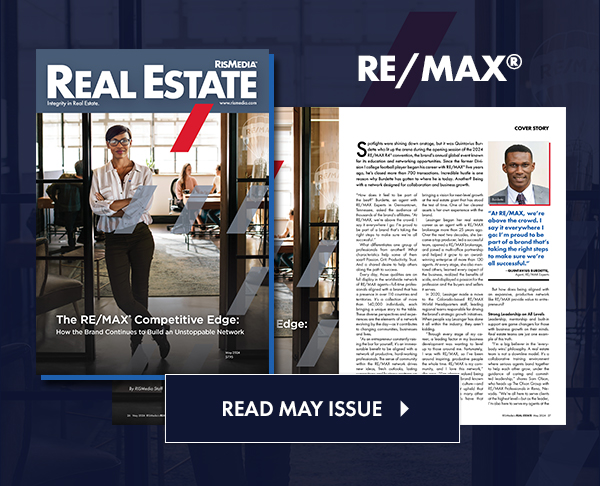 From eco-friendly coffee cups to hybrid cars, no one can deny that Americans are jumping on the green bandwagon. But while some environmentally friendly lifestyle changes remain somewhat small—reusable grocery bags, anyone?—others are large. You’ve seen it with Energy Star appliances and windows, but what about environmentally certified homes?
From eco-friendly coffee cups to hybrid cars, no one can deny that Americans are jumping on the green bandwagon. But while some environmentally friendly lifestyle changes remain somewhat small—reusable grocery bags, anyone?—others are large. You’ve seen it with Energy Star appliances and windows, but what about environmentally certified homes?
Here is where the passive house steps in. This home design concept is not new; it has been circulating in Europe for years. However, the U.S. is just beginning to savvy up to the green building trend that some are calling the most rigorous building standard in the world.
The passive house can cut the energy consumption of a home used for heating by a startling 90 percent. Compare that to an Energy Star home, which may save 15 to 20 percent energy on heating, or LEED, which weighs in less than 30 percent.
So what is a passive house? And how can a home meet a Passive House Building Energy standard?
The phrase “passive” describes the way the home relies on natural resources, saving energy without resorting to “active” technologies, including photovoltaics or solar thermal hot water systems.
To put it short, these homes are virtually air-tight and extremely well insulated. They are mostly heated by passive solar gain, and shading and window orientation are utilized to help cool the home while an energy recovery ventilator provides a fresh air supply. This results in superior air quality, and the prime insulation creates minimal outdoor noise infiltration. So we’re looking at a temperate (temperatures remain between 72 and 73 degrees Farenheit year-round), quiet home with terrific air quality.
Over the last 10 years, more than 15,000 buildings in Europe have been built or remodeled to the passive house standard, from single and multifamily residences, to schools, factories and office buildings. To ensure the most militant of standards are being met, projects are monitored by the PassivHaus Institute in Darmstadt, Germany, which was founded in 1996.
But the U.S. isn’t too far behind. There are now several institutions and organizations dedicated to building passive homes and educating consumers, builders, contractors and real estate professionals about the benefit of these homes. U.S. organizations include the Earth Advantage Institute and Ireland’s Passive House Academy, which recently opened an office in New York. These organizations work to provide educational outreach to promote implementation of Passive House Building Energy standards, as well as the design approach and techniques to accomplish that standard.
As a real estate professional, how will the green building movement affect your business? Green homes are on the rise, forming a market that is critical for the REALTOR® to understand—especially if your location has an abundance of environmentally proactive consumers.
Recently, researchers from the University of California, Berkeley, and the University of California, Los Angeles, released a study on the economic value of green home labels in the California residential marketplace.
“The Value of Green Labels in the California Housing Market” is the first in-depth, large-scale independent economic analysis of the value of green home labels in California.
The study revealed that a green home label adds an average 9 percent price premium for single-family homes in California. It’s important to note that the price premium associated with a green label varies considerably from region to region.
“In certain regions of the state, we observed a phenomenon we’ve termed the ‘Prius effect’—a positive correlation between the value of green home labels and environmental ideology, as measured by the rate of hybrid registrations,” says Nils Kok, visiting professor at the University of California, Berkeley, who helped pioneer the study.
“In communities with strong environmental values, residents may see green homes as a point of pride or status symbol.”
According to builder Doug McDonald, passive houses are not merely a status symbol, but a smart living choice for the sophisticated buyer.
“Passive houses are great for those who have already owned a number of properties. Once you’ve lived in a few houses and paid gas bills and oil bills and seen roofs leak because they’re not properly insulated, you become a more sophisticated buyer. A first-time buyer would look more toward things like size, but once you’ve owned a few properties, you start thinking about things differently. Passive homes are about quality.”
In the fall of 2011, McDonald completed—and now resides in—the very first retrofit passive house on the East Coast. While across the country, builders are embarking on creating passive houses from the ground up, McDonald is one of the first to purchase an old home and retrofit it.
And not just any home, either. McDonald’s home—located in Westport, Conn.—was originally built for Oscar Levant in the 1930s by architect Barry Bryne, one of Frank Lloyd Wright’s protégés. But this isn’t why McDonald chose the home. “It sat high on a hill and faced south, and it was made out of concrete, which meant I could take advantage of its thermal mass,” McDonald explains.
McDonald is a designer and developer with Green Muda LLC, a construction and development team working within the guidelines of Passive House Institute.
“You put more money toward better windows, high-efficiency doors and insulation, and less toward your heating and cooling system overall,” explains McDonald, whose home does not have a boiler. “It’s a simple idea; the difficult part about building to the standard is in the execution.”
With a nod to the passive house’s strict building standard, McDonald says, “You’re not living in a Prius. You’re living in a military-grade Humvee.” If Humvee’s could reduce your carbon footprint while saving you money annually on your heating, that is.
McDonald’s home is an even 73 degrees all year long, and he notes that another unique feature is the quiet created by the walls, which are built 23 inches thick. “When there’s a rain storm, you can see the rain going by the windows, but you can’t hear it. It’s a very strange affect—like you’re inside an aquarium.”
While passive housing is currently still in the fringe, McDonald’s efforts are far from solitary. There are currently more than 30,000 passive houses in the world, and that number is growing. In late summer of 2012, the first multi-family passive house project—consisting of four passive condos—was completed in Brooklyn, New York. The complex, dubbed Haus 96, was designed by architect Ken Levenson.
“This isn’t a trend or a fashion,” wrote Levenson on the Haus 96 website. “Passive houses will become the new standard.”
The U.S. green building market value sat at $71 billion in 2010, but is expected to rise to an impressive $163 billion by 2015, according to McGraw-Hill Construction Data, showing that green initiatives like passive housing will soon move from idealism to realism.
Once a year, the International Passive House Association holds a house tour where passive homeowners open their homes to the public to help spread the passive movement. McDonald’s home, along with many others, will be available for touring November 9 through 11. Details are available at www.passivehouse-international.org.










